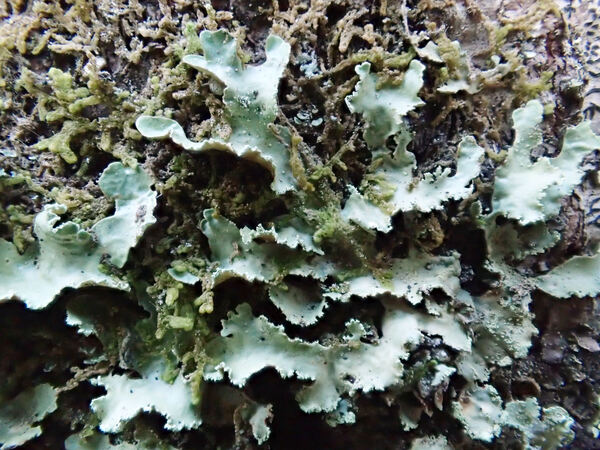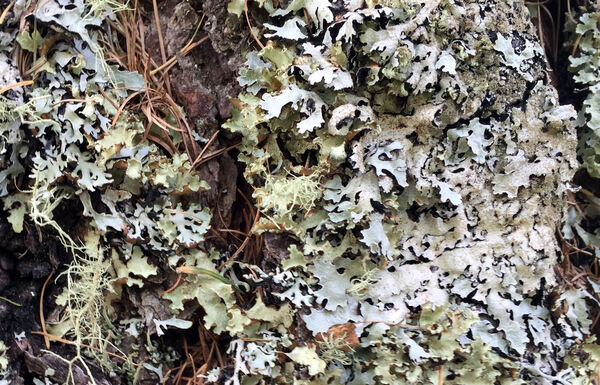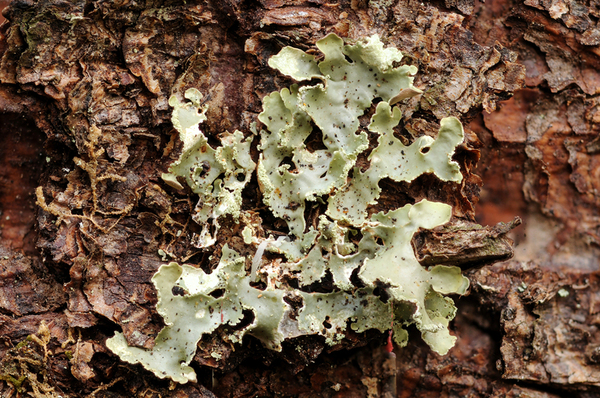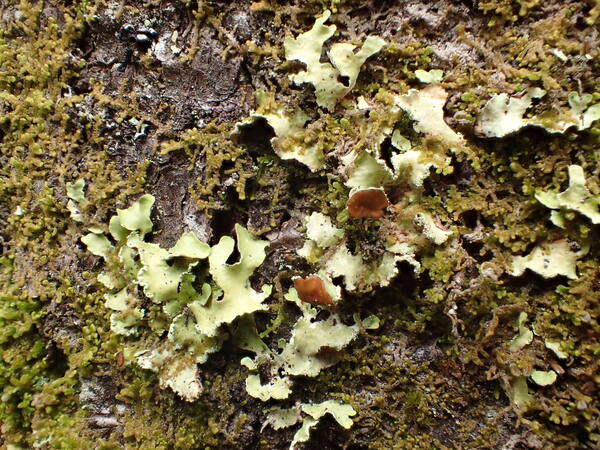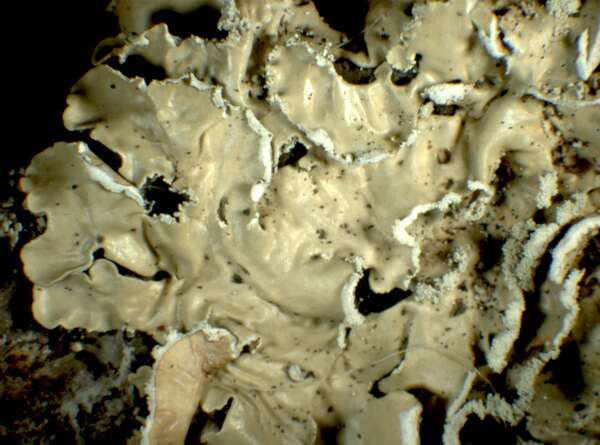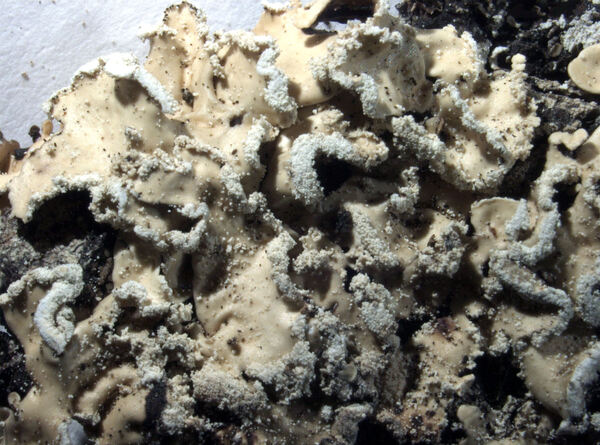Cetraria oakesiana Tuck.
Boston J. Nat. Hist., 3: 445, 1841.
Synonyms: Allocetraria oakesiana (Tuck.) Randlane & A. Thell; Cetraria bavarica Kremp.; Platysma oakesianum (Tuck.) Nyl.; Tuckermannopsis oakesiana (Tuck.) Hale; Usnocetraria oakesiana (Tuck.) M.J. Lai & J.C. Wei
Distribution: N - Frl (Nascimbene & al. 1998), Ven (Nascimbene & Caniglia 2003c, Watson 2014), TAA (Nascimbene & Caniglia 2000b, Nascimbene & al. 2007b, 2014, 2022, Nascimbene 2014, Nimis & al. 2015, Trindade & al. 2021).
Description: Thallus foliose, dorsiventral, rather closely adnate, forming very irregular patches. Lobes 4-10 mm wide, elongated, usually concave, with raised, white-sorediate margins. Upper surface yellowish green, smooth and somewhat glossy; lower surface tan to pale brown, with scattered, simple or forked, pale brown rhizines, without pseudocyphellae. Upper and lower cortex paraplectenchymatous, rather thin, with thick-walled cells; medulla white. Apothecia extremely rare (not found in Italian material), zeorine, usually submarginal, up to 7 mm across, with a pale brown disc. Asci 8-spored, narrowly clavate, with a small axial body and a distinct, K/I+ blue ring-structure in the rather large tholus, approaching the Lecanora-type. Ascospores 1-celled, hyaline, subglobose, c. 5 μm wide. Pycnidia rare, black, marginal, projecting. Conidia sublageniform, 7-12 x 0.8-1.5(-2) μm. Photobiont chlorococcoid. Spot tests: upper cortex and medulla K-, C-, KC-, P-. Chemistry: upper cortex with usnic acid; medulla with caperatic, lichesterinic and protolichesterinic acids. Note: a cool-temperate to boreal-montane, incompletely circumpolar species found on basal parts of conifers in humid-cold montane forests, more rarely on lignum (e.g. on stumps); restricted to the Alps in Italy. It is included in the Italian red list of epiphytic lichens as “Vulnerable” (Nascimbene & al. 2013c).
Growth form: Foliose, broad lobed
Substrata: bark
Photobiont: green algae other than Trentepohlia
Reproductive strategy: mainly asexual, by soredia, or soredia-like structures (e.g. blastidia)
Subcontinental: restricted to areas with a dry-subcontinental climate (e.g. dry Alpine valleys, parts of Mediterranean Italy)
Commonnes-rarity: (info)
Alpine belt: absent
Subalpine belt: extremely rare
Oromediterranean belt: absent
Montane belt: extremely rare
Submediterranean belt: absent
Padanian area: absent
Humid submediterranean belt: absent
Humid mediterranean belt: absent
Dry mediterranean belt: absent

Predictive model
Herbarium samples
Growth form: Foliose, broad lobed
Substrata: bark
Photobiont: green algae other than Trentepohlia
Reproductive strategy: mainly asexual, by soredia, or soredia-like structures (e.g. blastidia)
Subcontinental: restricted to areas with a dry-subcontinental climate (e.g. dry Alpine valleys, parts of Mediterranean Italy)
Commonnes-rarity: (info)
Alpine belt: absent
Subalpine belt: extremely rare
Oromediterranean belt: absent
Montane belt: extremely rare
Submediterranean belt: absent
Padanian area: absent
Humid submediterranean belt: absent
Humid mediterranean belt: absent
Dry mediterranean belt: absent

Predictive model
| Herbarium samples |
 INDEX FUNGORUM
INDEX FUNGORUM
 GBIF
GBIF
 DOLICHENS
DOLICHENS
